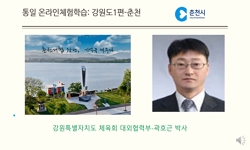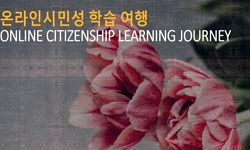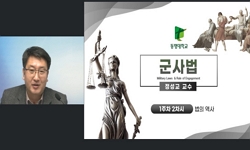In this thesis, the present writer conducted a comparative study of Tongilgyo and Donghak in their understanding of humankind. In order to research the understanding of humankind according to the Tongilgyo, I suggest three categories: humankind as fa...
http://chineseinput.net/에서 pinyin(병음)방식으로 중국어를 변환할 수 있습니다.
변환된 중국어를 복사하여 사용하시면 됩니다.
- 中文 을 입력하시려면 zhongwen을 입력하시고 space를누르시면됩니다.
- 北京 을 입력하시려면 beijing을 입력하시고 space를 누르시면 됩니다.
敎典에서 본 統一敎와 東學의 人間理解와 修行方法硏究 = (A) Study on the Human Nature Described in Canons of Tongilgyo and Donghak and Their Disciplinary Methods
한글로보기https://www.riss.kr/link?id=T10116662
- 저자
-
발행사항
아산 : 선문대학교 신학전문대학원, 2004
-
학위논문사항
학위논문(석사) -- 선문대학교 신학전문대학원 , 조직신학 전공 , 2005. 2
-
발행연도
2005
-
작성언어
한국어
- 주제어
-
KDC
238.992 판사항(4)
-
발행국(도시)
충청남도
-
형태사항
93p. : 삽도 ; 26cm
-
일반주기명
참고문헌: p. 89-91
-
소장기관
-
0
상세조회 -
0
다운로드
부가정보
다국어 초록 (Multilingual Abstract)
Tongilgyo uses the Old Testament story of Adam and Eve to explain the fallen aspect of humanity. As the common ancestor of humankind, Adam and Eve were the source of the separation between God and His children.
Using Adam and Eve to explain Humanity's fallen state is common among Korean Christian churches. Korean Christian Spiritualists, e.g., Kim Sung Do's SungJuGyo, Jung Deuk Eun's the Principle of Life, and Kim Baek Moon's Holy Spirit Theology explain humanity's present state using the Bible's account of Adam and Eve.
As the result of my research, I have concluded that there are other churches that have closely related explanations of the fallen state of humankind that are similar to Tongilgyo's theory.
The second part of my thesis is concerned with humankind created by God in an original state. Tongilgyo reconfirms the traditional Christian view of the parent-child relationship between God and humans. God is the Parent of humanity, and we are the children who receive the divine love and concern of our creator.
According to the Principle of God's Creation, humankind were designed to exist possessing our creator's divine nature. Human life and spirituality were meant to reflect that divinity. In light of this principle, reconciliation with our original state needs to occur through individual effort.
Humankind who possess the divine love of God try to accomplish individual growth through the development of their personality. The individual experiences further growth and development through their spouse and children. In addition, humans must seek harmony with nature and with all humans.
A person who accomplishes this ideological state is defined as a 'saint', but this concept is used differently from the Christian one. According to the Tongilgyo Ideology, a saint is one who tries to accomplish the original state of humankind and lives a life that demonstrates this state of divine love.
Consequently, Donghak's new humanism, which revived the dignity of humankind, set the Confucian society on fire by the theory of serving God and serving humankind as Hanul-nim. This theory includes the ideas of nurturing the development of God who is innate within each humankind, regarding humankind as Hanul-nim, and the view of humankind as the Hanul-nim. This revolutionary perspective of humankind raised the Harmony(調和), SangSeng(相生) in the relationship among God, humans, and the natural world.
The opening of the Tongilgyo's new era is supposed to offer a new explanation of humankind in relation to humanism. This new perspective will shed a light on the role of the individual as the one who is responsible for perfection of personality, family, and harmony with the natural world.
In this thesis, the present writer conducted a comparative study of Tongilgyo and Donghak in their understanding of humankind. In order to research the understanding of humankind according to the Tongilgyo, I suggest three categories: humankind as fallen beings, humankind in their original state; and humankind as perfected individuals.
Tongilgyo uses the Old Testament story of Adam and Eve to explain the fallen aspect of humanity. As the common ancestor of humankind, Adam and Eve were the source of the separation between God and His children.
Using Adam and Eve to explain Humanity's fallen state is common among Korean Christian churches. Korean Christian Spiritualists, e.g., Kim Sung Do's SungJuGyo, Jung Deuk Eun's the Principle of Life, and Kim Baek Moon's Holy Spirit Theology explain humanity's present state using the Bible's account of Adam and Eve.
As the result of my research, I have concluded that there are other churches that have closely related explanations of the fallen state of humankind that are similar to Tongilgyo's theory.
The second part of my thesis is concerned with humankind created by God in an original state. Tongilgyo reconfirms the traditional Christian view of the parent-child relationship between God and humans. God is the Parent of humanity, and we are the children who receive the divine love and concern of our creator.
According to the Principle of God's Creation, humankind were designed to exist possessing our creator's divine nature. Human life and spirituality were meant to reflect that divinity. In light of this principle, reconciliation with our original state needs to occur through individual effort.
Humankind who possess the divine love of God try to accomplish individual growth through the development of their personality. The individual experiences further growth and development through their spouse and children. In addition, humans must seek harmony with nature and with all humans.
A person who accomplishes this ideological state is defined as a 'saint', but this concept is used differently from the Christian one. According to the Tongilgyo Ideology, a saint is one who tries to accomplish the original state of humankind and lives a life that demonstrates this state of divine love.
Consequently, Donghak's new humanism, which revived the dignity of humankind, set the Confucian society on fire by the theory of serving God and serving humankind as Hanul-nim. This theory includes the ideas of nurturing the development of God who is innate within each humankind, regarding humankind as Hanul-nim, and the view of humankind as the Hanul-nim. This revolutionary perspective of humankind raised the Harmony(調和), SangSeng(相生) in the relationship among God, humans, and the natural world.
The opening of the Tongilgyo's new era is supposed to offer a new explanation of humankind in relation to humanism. This new perspective will shed a light on the role of the individual as the one who is responsible for perfection of personality, family, and harmony with the natural world.
목차 (Table of Contents)
- 목차 = 1
- Ⅰ. 서론 = 1
- 1. 문제 제기 및 연구의 목적 = 1
- 2. 연구의 방법 및 범위 = 1
- Ⅱ. 통일교의 인간이해 = 3
- 목차 = 1
- Ⅰ. 서론 = 1
- 1. 문제 제기 및 연구의 목적 = 1
- 2. 연구의 방법 및 범위 = 1
- Ⅱ. 통일교의 인간이해 = 3
- 1. 통일교의 인간이해 = 3
- 1) 창조본연의 존재로서의 인간 = 3
- 2) 책임분담적 존재로서의 인간 = 7
- 3) 타락한 존재로서의 인간 = 8
- 4) 후천시대의 주체로서의 인간 = 11
- 2. 통일교의 여성이해 = 13
- 1) 양성평등(兩性平等)과 여성 = 14
- (2) 원죄(原罪)와 여성 = 15
- (3) 탕감복귀섭리(蕩減復歸攝理)와 여성 = 17
- 3. 통일교의 이상적 인간 = 18
- (1) 성자(聖子) -개인 실현- = 18
- (2) 공생공영공의주의(共生共榮共義主義) -사회실현- = 22
- Ⅲ. 통일교의 수행방법 = 25
- 1. 기도(祈禱) = 25
- 2. 고생(苦生) = 29
- 3. 훈독(訓讀) = 31
- Ⅳ. 동학의 인간이해 = 33
- 1. 동학의 인간이해 = 33
- (1) 한울을 모시는 존재로서의 인간 = 33
- (2) 한울을 봉양하는 존재로서의 인간 = 38
- (3) 인간을 존중하는 존재로서의 인간 = 41
- 2. 동학의 여성이해 = 45
- (1) 양성평등과 여성 = 45
- (2) 가정의 화목과 여성 = 47
- (3) 부부평등과 여성 = 48
- (4) 태교와 생활규범과 여성 = 51
- 3. 동학의 이상적 인간 = 56
- (1) 성·경·신(性·敬·信) = 56
- 1) 성(性) = 57
- 2) 경(敬) = 57
- 3) 신(信) = 59
- (2) 삼경(三敬) = 61
- 1) 경천(敬天) = 61
- 2) 경인(敬人) = 64
- 3) 경물(敬物) = 65
- Ⅴ. 동학의 수행방법 = 69
- 1. 수심정기(修心正氣) = 69
- 2. 주문(呪文)·심고(心告) = 71
- Ⅵ. 통일교와 동학의 인간이해와 수행 방법 연구 = 76
- 1. 비교의 문제와 한계 = 76
- 2. 통일교와 동학의 인간이해 연구 = 77
- (1) 인간이해 = 77
- (2) 여성이해 = 79
- (3) 이상적 인간 = 83
- 3. 수행방법 연구 = 84
- Ⅶ. 결론 = 86
- 참고문헌 =89
- (Abstract) = 92











